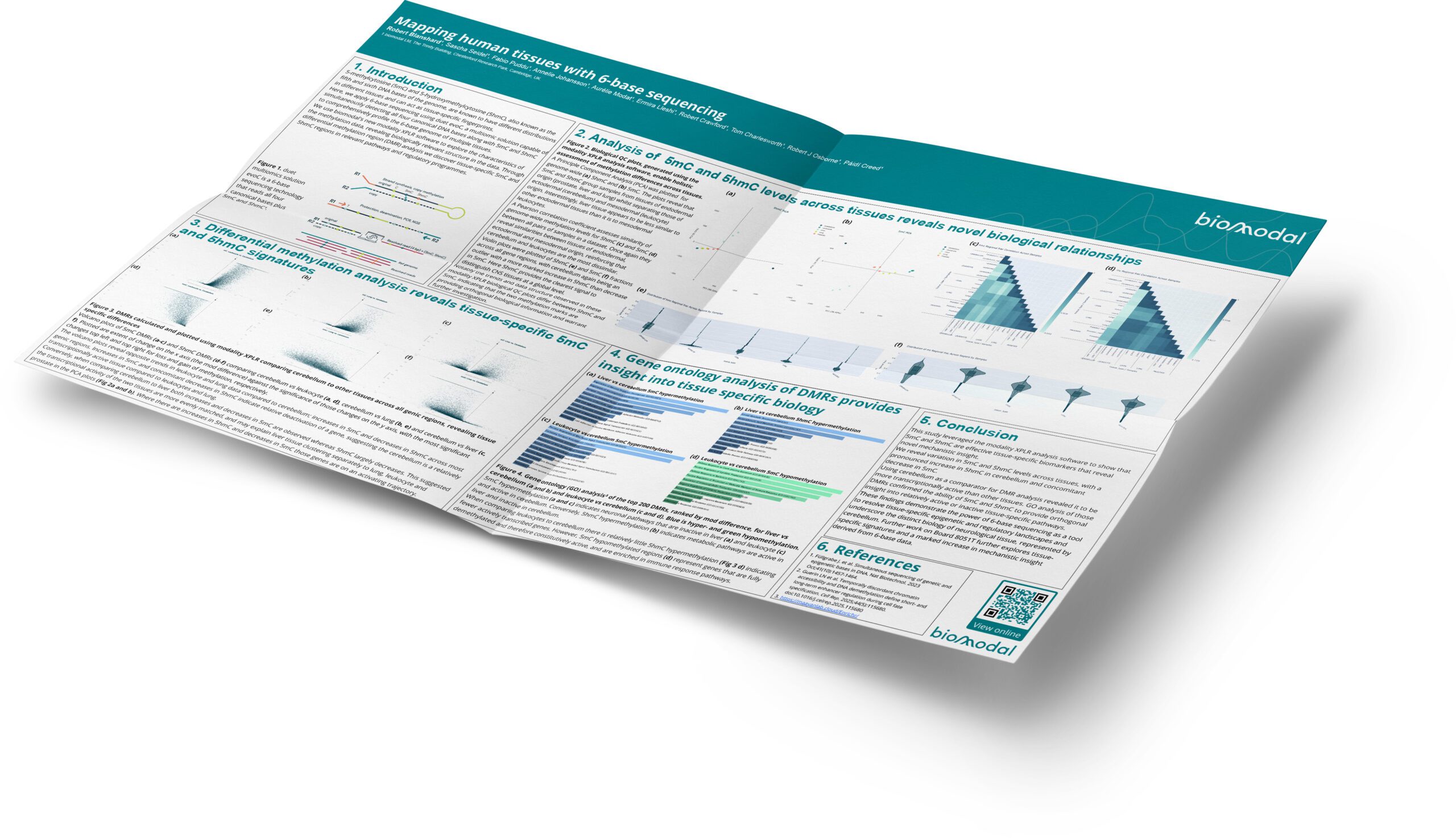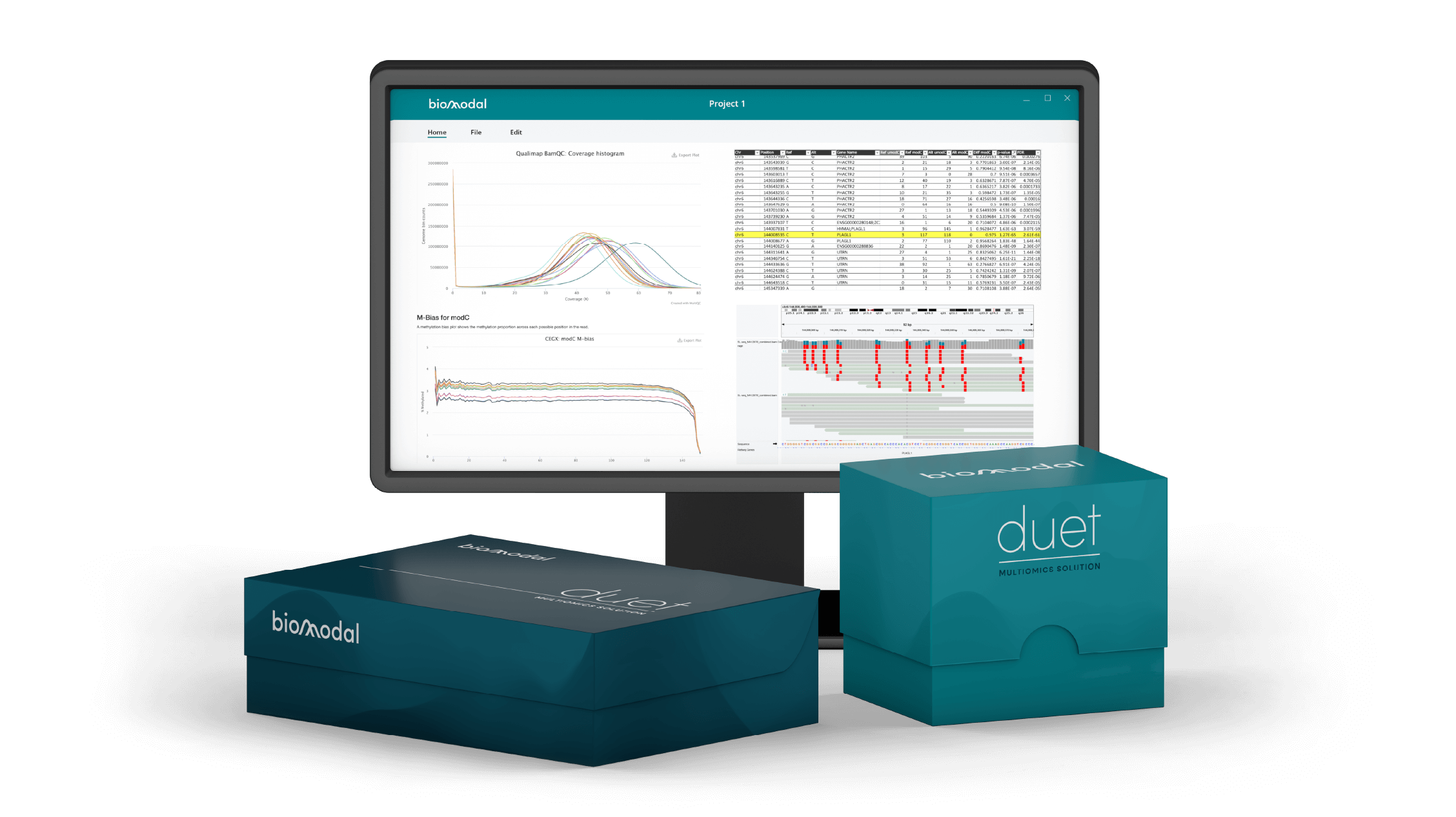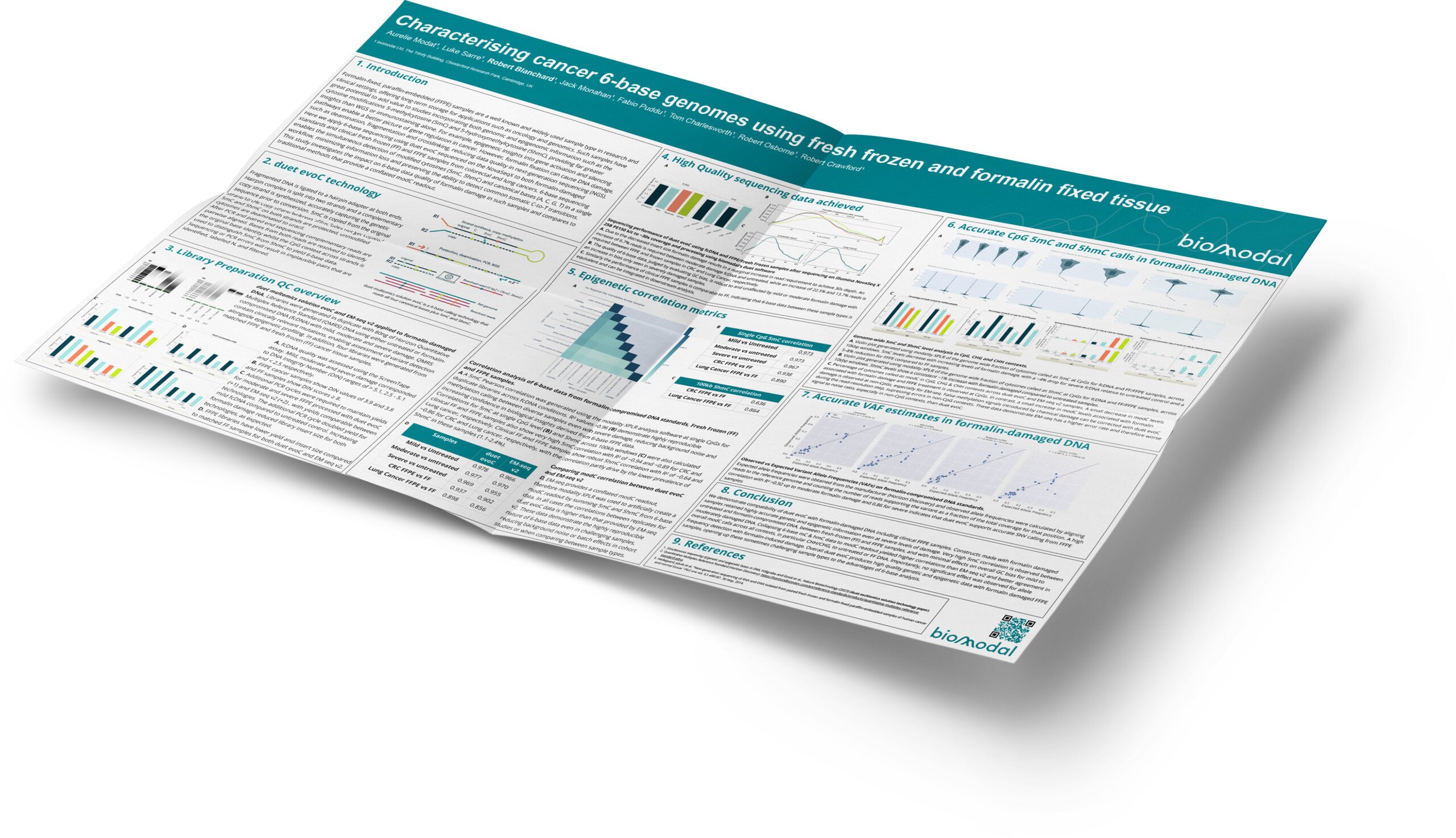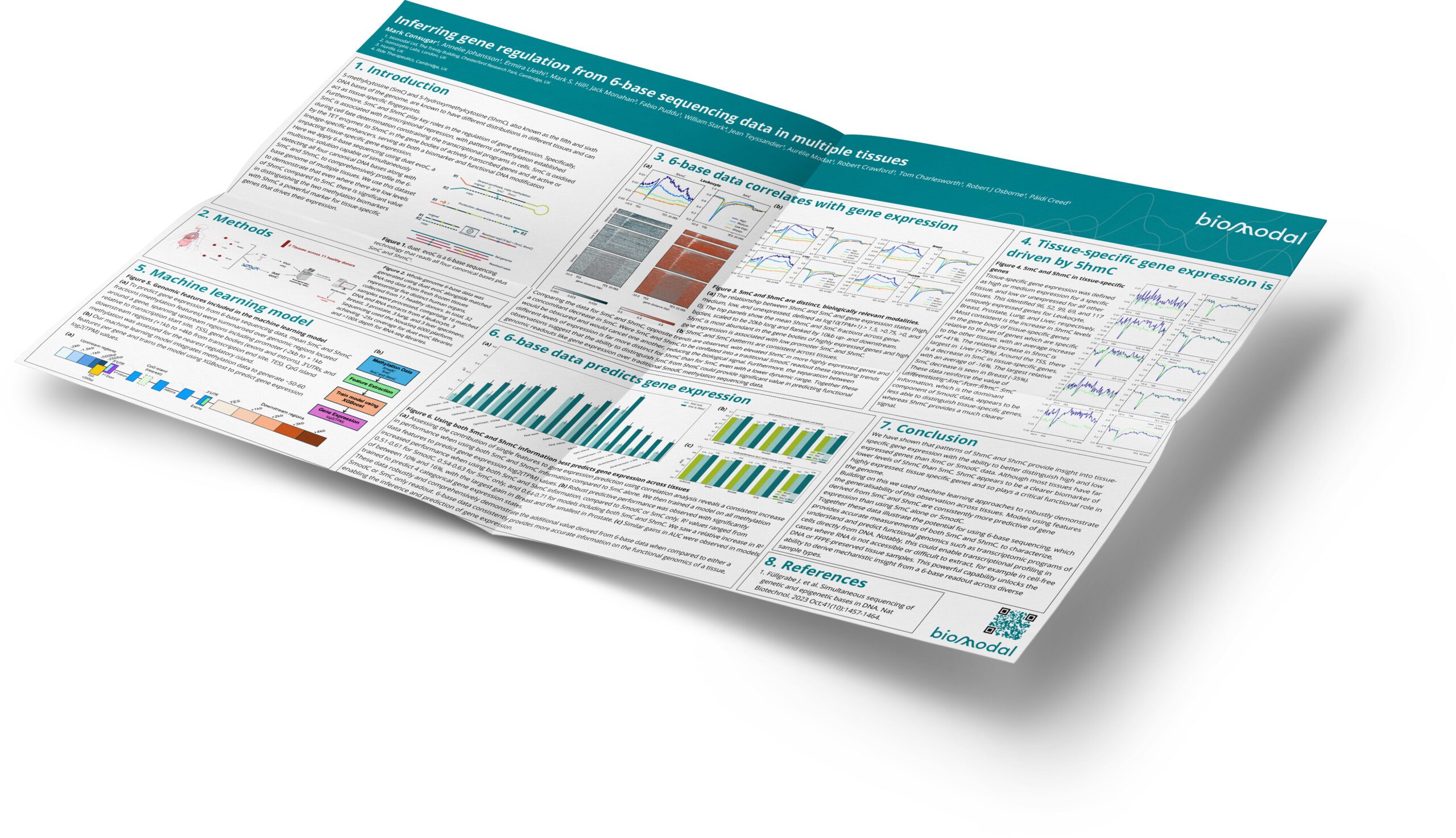
Mapping human tissues with 6-base sequencing
Using modality XPLR, we reveal variation in 5mC and 5hmC levels across tissues, with a pronounced increase in 5hmC in cerebellum and concomitant decrease in 5mC.
Integrate multiple modes of biology from a single sample in a single experiment to provide transformative insights into health and disease.
Read the latest research paper featuring 6-base sequencing in Nature Structural & Molecular Biology.
Current technologies are unable to reliably resolve both genetic and epigenetic sequences at low sample input and miss important information. biomodal’s duet multiomics solution evoC gives you access to the 6-base genome – all four canonical bases and distinguishes 5‑methylcytosine (5mC) and 5‑hydroxymethylcytosine (5hmC) – from a single 5ng DNA sample, in a single experiment, with high accuracy.
Combined epigenetic and genetic analysis in a single sequencing run lets you access the most critical information from your DNA samples.
Better characterise liquid biopsy and genomic DNA samples of early stage cancer for diagnostic and therapy development.
Combined data reveals the role of methylation in neurodegeneration.
Pinpoint epigenetic changes that determine patterns of disease and health throughout a lifespan.
Improved DNA-based diagnostics with the ability to see disease-relevant changes from low input samples
Detect minute epigenetic changes to better understand maternal and foetal health.

A true 6-base genome that distinguishes 5mC and 5hmC together with all four canonical bases to measure multiple modes of biology
Assess all four canonical bases plus modified cytosine

Using modality XPLR, we reveal variation in 5mC and 5hmC levels across tissues, with a pronounced increase in 5hmC in cerebellum and concomitant decrease in 5mC.

This poster demonstrates compatibility of duet evoC with formalin-damaged DNA including clinical FFPE samples.

Patterns of 5hmC and 5hmC provide insight into tissue-specific gene expression with the ability to better distinguish high and low expressed genes than 5mC or 5modC data.
We can help you reveal new data and multimodal insights from your research.